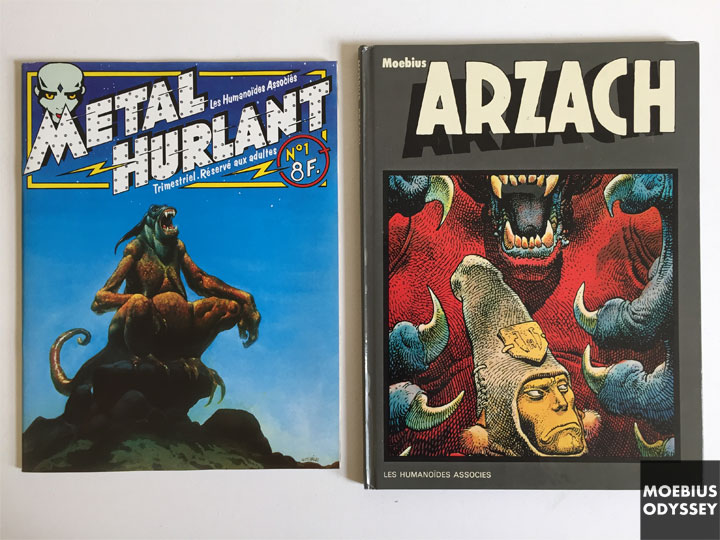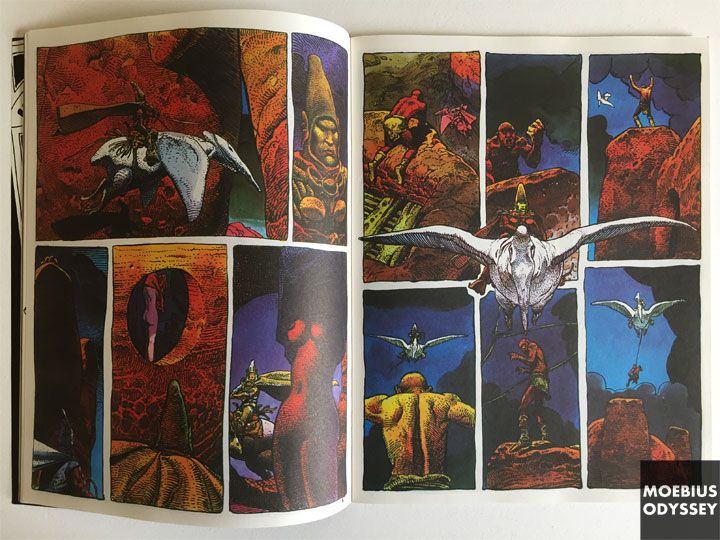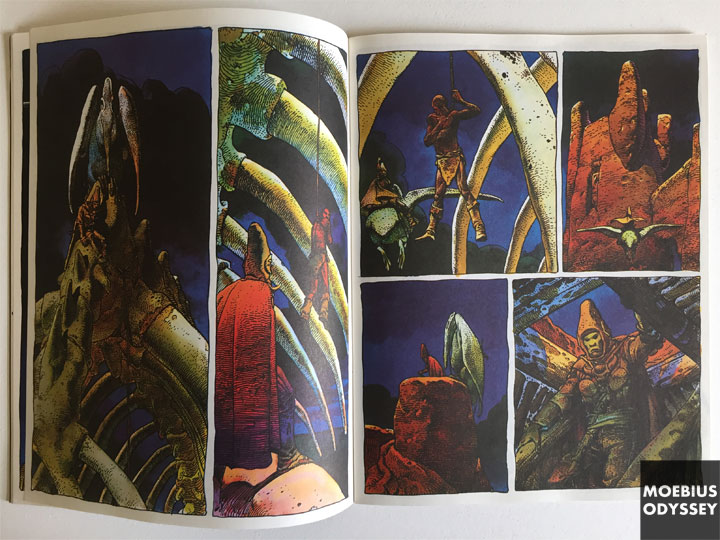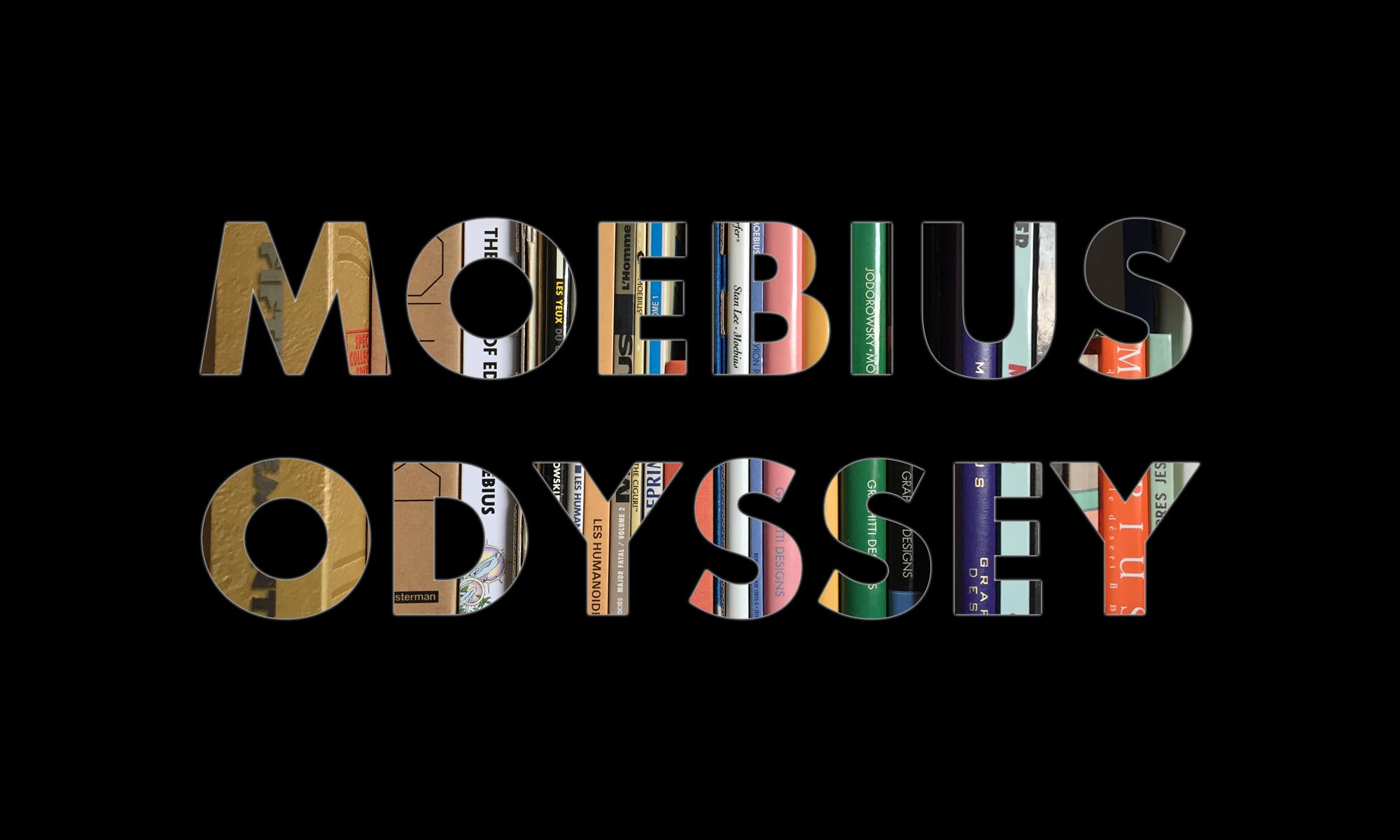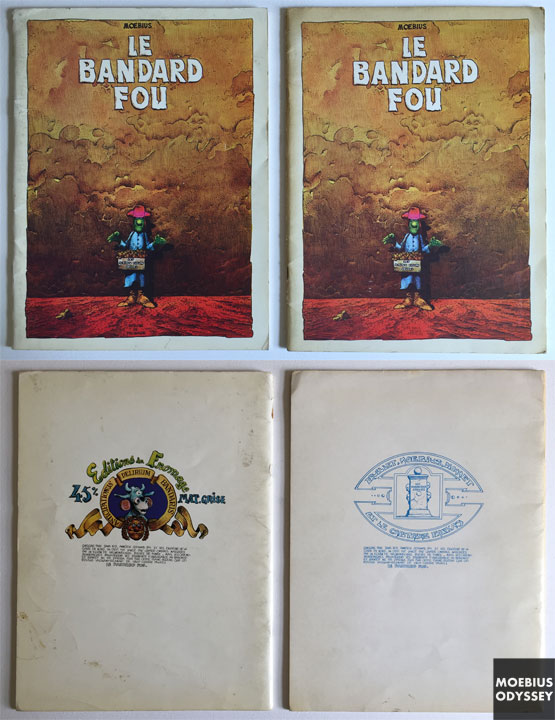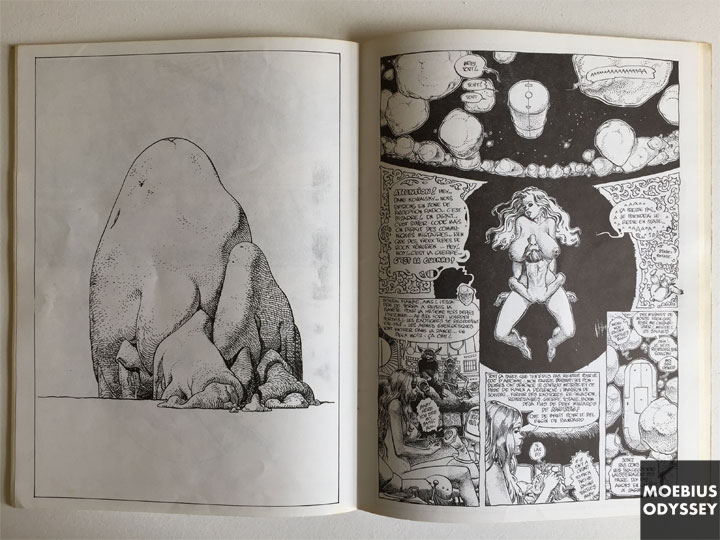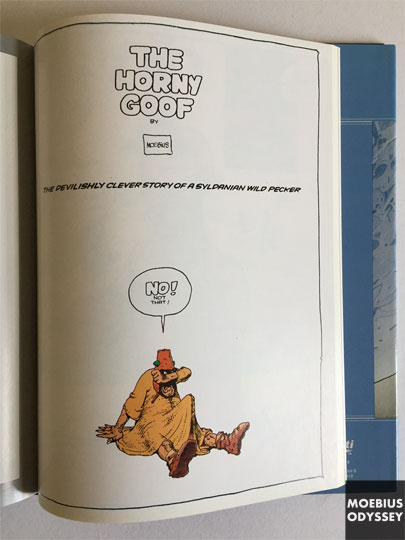Arzach (1974)
Les Humanoïdes Associés
21 x 27cm, 8 pages
If ever there was a defining moment in both French bandes dessinées and the landscape of comic books as a whole, it would be when in December 1974, Moebius, Jean-Pierre Dionnet, Philippe Druillet and Bernard Farkas put their minds together to form Les Humanoïdes Associés (or Humanoids) and launched Métal hurlant (meaning “Howling Metal”) out into an unsuspecting world.
One of the first sights a reader picking up Métal hurlant would have noticed would be of a curious, caped, pointed hat wanderer mounted on the back of a pale white bird/pterodactyl, soaring silently above a barren, dreamlike landscape. Introduced for the first time in Métal hurlant N°1, Arzach is a wordless, colour comic and one of Moebius’ most recognisable and enduring stories. With each part of the saga, Moebius would vary the spelling as a sort of tongue-in-cheek joke, for instance Arzach would became Harzak, then Arzak, then changed to Harzakc and finally Harzach.
Métal hurlant would go on to attract some of the most talented artists in the field such as Philippe Druillet, Enki Bilal, Milo Manara and many more in the pages of each issue. Métal hurlant reached a new international platform when it was republished in America by National Lampoon and debuted in April 1977 as Heavy Metal.
Arzach was a breath of fresh air for a medium traditionally aimed at children and would have a huge inspiration on other artists’ and their work. One notable example, Japanese auteur filmmaker and founder of Studio Ghibli, Hayao Miyazaki, who’s masterpiece Nausicaä of the Valley of the Wind shows a great appreciation of Moebius’ creation. The two great artists had such mutual respect for one another’s work that they even held a joint exhibition titled ‘Miyazaki-Moebius’ at the Monnaie de Paris from 2004 to 2005.
